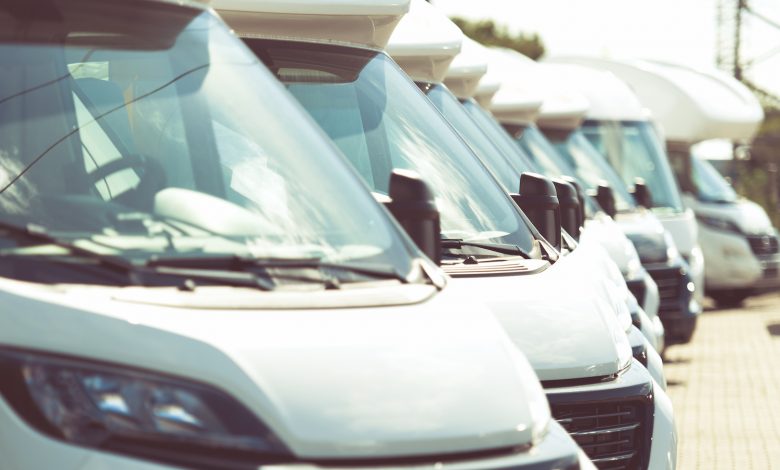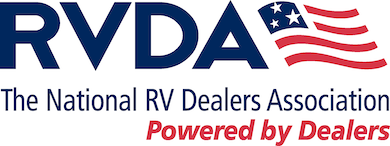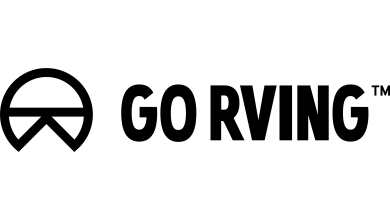Dealer Trends: RV Retailing as COVID-19 Lingers
RV dealers are learning to adapt to the “new normal” when it comes to business conditions on the ground.

This year’s industry outlook remains uncertain as a result of the ongoing COVID-19 pandemic.
Earlier this year, dealers were forced to adapt to shelter-in-place restrictions that cancelled shows and limited their ability to interact with consumers. Now, many of those earlier restrictions have been lifted, but dealers are facing a new set of challenges associated with delays in receiving inventory and supplies, plus increased scrutiny related to lending in some cases.
Recently, RV PRO asked dealers about the conditions they are encountering in their respective markets. Here is what they said:
John Cathey, owner, Carolina Coach and Camper, Claremont, N.C.
“The market is always a challenge; this industry is definitely not for the faint of heart. However, having been an RV dealer for 25 years and an automotive dealer for more than 14 before that, I’ve learned that every challenge brings opportunities for those with vision and willingness to change.
“We’re experiencing about 20 percent less traffic than the same period last year, but more serious and better qualified prospects, so I’m excited and impressed with their attitude and zeal. Smart dealers will be careful to provide new buyers with an exceptional dealership experience that ensures they become long-term business partners.
“Getting inventory – new and pre-owned – is a serious problem, although new inventory is slowly trickling in. The unavailability of Sprinter chassis continues to be problematic, as it has been for three years running. Manufacturers are having challenges due to many employees in Indiana having left the industry because they couldn’t sustain themselves. Additionally, our manufacturers are having trouble securing transportation for the units they have completed.
“Finding pre-owned units is also extremely difficult. With more first-time buyers, we are seeing fewer trade-ins. Lower availability, combined with unprecedented demand, has led to increased prices at auctions, often book retail or only slightly less.
“We continue to see the most growth with Cherokee, Passport and A-liner towables, likewise Sanibel fifth wheels. Our motorhome growth is strongest in Class B’s and C’s, particularly PleasureWay, Tiburon and Forester.
“Parts and accessories continue to be a challenge due to short staffing at the OEM level and we are seeing a lot of errors in accuracy and timeliness due to substitution of insufficiently trained personnel.
“In terms of banking, we are pleased with the support we get from our retail lenders. I believe our reputation for integrity and thoroughness with paperwork and communications has afforded us superior service and mutual trust. Our lenders are transparent regarding denials. We have no complaints.
“Interest rates have been relatively consistent and are open to discussion. The ratio of customers paying cash versus financing has increased about 2 to 3 percent year-to-year and we have noticed a modest increase in down-payments, which I think is primarily due to our consultants raising customer expectations during the sales process.
“I believe the next three or four months will be challenging, as manufacturers rebuild their capacities by hiring and training new employees and try to get their inbound supply lines back up to speed. Labor efficiencies and quality control will be challenges for them and the shortage of pre-owned units will be difficult for us.
“For the rest of the year, we will be focusing on convincing prospects of the many advantages of buying new and making appointments (which have a much higher closing ratio) instead of waiting on walk-ins.”
Terry Sinkler, president, U-Neek RV Center, Kelso, Wash.
“Overall, the market is stronger than we’ve seen in years, though I expect this is a short-lived burst of demand and expect to see a slowdown this fall as the virus continues to spread and the number of unemployed remains high. The virus will be good for our industry in the long run, as more people remain hesitant to fly overseas or crowd onto cruise ships.
“Meeting demand is a little harder. Most factories are still not at 100 percent and neither are their suppliers, which is causing issues with the supply chain and the ability to build product. Units we ordered at the beginning of the year for delivery in April and May are not expected until September, October or later.
“Right now, there isn’t any product we can get that is not selling. We are completely sold out of several brands and have a much lower-than-normal inventory on all others. The only segment that has not seen big demand is larger fifth wheels.
“While we are slowly getting units, we have really struggled getting parts and accessories. If you walk through our store today, you will see nearly a third of the peg hooks and shelves empty. Suppliers have over 100 of a part in the Midwest and none of that part in any of their other eight warehouses. It has been very frustrating for our parts staff, technicians and, most importantly, our customers.
“When you cannot get the part you need to get the customer’s unit working so they can use it, it creates a big problem. We are selling new units but cannot get needed parts from factories or suppliers. It’s a bad situation for the industry.
“On the positive side, we have not seen approvals declining or interest rates going up, other than for customers who are temporarily laid off having more difficulty with banks requiring more proof of income. As for cash customers, in June we saw an influx, but July has returned to a more normal percentage.
“I think the rest of 2020 is going to be as much of a roller- coaster as the first six months. Demand is still higher than normal, although sales have returned to a more normal state due to lack of inventory. Ours are holding at about a third of what they would normally be for the summer months. We still have all of our to-build orders in the pipeline and we have added more to replace the units we would normally have.
“I don’t expect to carry as much inventory into winter as usual because, between continued cases of COVID-19 and the threat of further business failures in restaurants and other highly impacted business, I believe there will be a slowdown from what we normally see in the off-season, making this winter very challenging. I think it will take the industry another nine months to a year to recover completely. A lot is going to depend on how the virus grows or shrinks and how soon a vaccine is created.”
Brian Wilkins, owner, Wilkins RV, Bath, N.Y.
“I’ve been in this business since I was a 9-year-old kid, and I’ve been full-time for about 25 years. This is probably the most aggressive market I have ever seen, and it has sustained for about 2 ½ months now.
“Inventory is as low as I have ever seen it. We are working closely with our manufacturing partners and have added a couple of new ones. It’s frustrating, because we are missing some sales, but it’s nobody’s fault.
“The things that are selling best are stick-and-tin, entry-level trailers and anything used. We are also doing well with travel trailers, fifth wheels up to $50K and Class C’s. As for brands, with four stores, we carry a lot of different brands, but no one is outselling the others.
“As for parts and accessories, I am not close enough to it to answer. It is probably an issue, but not so big an issue that it’s coming up to me. We are working hard to educate our customers about how difficult it is. We are asking them to come in only with issues that are keeping them from camping and hold off on anything else until the end of the season. I think they appreciate our honesty and are being very understanding.
“I have seen interest rates rise a little and some credit tiers concern banks more now. If one says ‘no’, we just go to another. The number of customers paying cash is consistent with what it’s always been.
“We are forecasting 10 percent more business for 2020 than we had originally expected. We are a little optimistic, but we are also preparing for the downside by cleaning up any aging inventory, building up cash (we are carrying a little larger nest egg than we usually would), and tracking traffic a little more closely so we are ready to react quickly to a downtick. Our management team is also communicating more than usual.”
Jeff Zimmerman, owner, Country Roads RV Center, Lexington, N.C.
“The market is very strong in our area. We are seeing a lot of first-time buyers purchasing 22 – 28-foot units that fit their current vehicles. Fifth wheel sales are up some; with everything selling well, but not nearly as much as travel trailers or overall demand.
“We can get some inventory, but not nearly as much as we need, which has caused re-order demand for units from factories that were already overwhelmed.
“We have not had any issues delivering units, but the good sway control systems are slow coming in and we have had problems getting replacement parts as well, especially from Dometic.
“Credit has tightened drastically. A person with credit challenges is much more difficult to get approved today and many are not being approved. Some customers with reasonable credit scores are seeing higher interest rates and almost all lenders are requiring 10 percent down. As a result, some customers are getting their own financing, but there has been no increase in the number of buyers purchasing with cash.
“The way I see 2020, two options seem most likely:
“Option 1: Things continue as they are with production backlogs and consumer demand slows 10 to 20 percent as many first- time buyers have already made their purchase.
Option 2: Plants are shut down again due to a second COVID outbreak and the production backlog goes from bad to worse. This option concerns me most for business planning, especially as there is nothing anyone can do to plan for or to weather that scenario.”
Christy Eagan, owner and president, Wisconsin RV World, Madison, Wis.
“Our traffic has been great, with about 75 percent first-time buyers, possibly due to people having been holed up in their homes. We are hearing that people want to travel but they don’t want to fly or stay in hotels. People can keep their RVs germ-free and cook their own healthy meals.
“We carry Keystone Residence park trailer, Sprinter and Springdale, Winnebago Minnie Drop, Micro Minnie and Micro Minnie Fifth Wheel, Minnie, Minnie Plus and Minnie Plus fifth wheel, Cruiser RV Radiance and Work and Play toy haulers. I’m getting inventory, but it’s what I ordered in March. Everything I ordered at the end of May and beginning of June won’t get here until the end of August or September. I’ve heard of dealers out west who have run out of inventory and everyone in my area is low. There might be one or two with over 100 units, but there should be at least five.
“Since people have been able to leave home, we can’t keep used units in stock. Up until a week ago, I had two: a fifth wheel and a Class A. Then, in one day, I took two trade-ins and two units on consignment.
“Prior to lock down, RV parts were difficult to get because of reduced staffing. Now that things are opening back up, the need for air conditioners, awnings, toilet paper, surge protectors and hitches are high, but there’s nothing out there to order. We work with three distributors who have tons of out-of-stock products listed, but if they have something, it’s in a different warehouse.
“Banks have not been as liberal as they were last year. It’s almost like they do not want to lend. People with excellent credit scores (over 800) are being declined and if they do receive an approval, they have to provide their two most recent tax returns, up to 12 months of bank statements and a payroll check stub less than 14 days old. And this is for customers with A credit!
“There are more cash customers, but the ratio of cash versus finance seems pretty close to what it was before. Increased interest rates have not been a problem as much as lenders shortening loan terms, making it hard for customers to make ridiculously large monthly payments.
“Although we’ve largely lost February, March and April; May, June and July have made up for that. We have also cut some of our large in-house shows and sales to promote social distancing, which saved us a lot in advertising dollars. We’ve used that savings on less expensive things such as our website, email blasts, etc.
“Although the pandemic is rearing its head again, doctors are still saying it’s better to be outside than inside, which promotes RVs. If you can safely go camping, hike, bike swim, and do a plethora of outdoor activities with your family, why wouldn’t you?
“RVing is cheaper than flying somewhere, renting a hotel and a car, and eating out three meals a day. The RV industry has been spotlighted and there’s a whole new customer base waiting around the corner. No, I take that back, they’re waiting in line outside the dealership.”


